Constellations: Auriga, Aries, Canis Major, Canis Minor, Cetus, Gemini, Orion, Perseus, Pisces, Taurus, Ursa Major, Ursa Minor
Asterisms: Winter Circle
Stars: Alcor-Mizar, Aldebaran, α Arneb, Alrescha, Castor, Capella, δ Ceti, Gomeisa, α Menkar, Mira, β Nihal, β Kochab, Pollux, Procyon, Rigel, Sirius
Clusters: Melotte 25/Hyades, NGC 869/NGC 884, NGC 1981
Planet: Venus
Nebula: Heart Nebula (IC1805), Soul Nebula (IC1848)
Messier Objects: M41, M42 (Orion Nebula), M43 (De Mairan's Nebula), M45 (The Pleiades), M47
Location: SCO
Date: 2020-02-21
Time: 6:30 PM - 11:55 PM ADT
Instruments: Visual, Binoculars 10x42 IS
Transparency: Very Good (4)
Seeing: Very Good (4)
Temperature: -16° C
SQM: 21.10
At SCO with Jerry, Blair MacDonald, Jeff Donaldson and Troy Sweeney. No clouds, no wind.
Taurus, Melotte 25/Hyades, M45/Pleiades
Time: 7:55 PM
Equipment: Visual, Binoculars
S&T Chart: 14, 15, A
Identified Aldebaran and the Hyades naked eye. Used binoculars to view the Hyades in more detail - beautiful!
The Pleaides was quite high in the sky and easily located adjacent to Taurus. All major stars in their nebulosity could be identified.
|
Ursa Major, Ursa Minor |
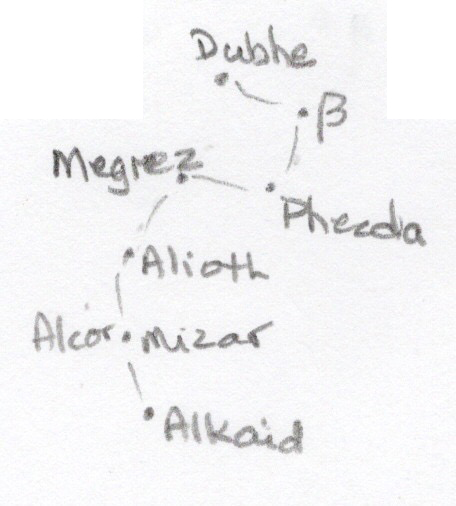
|
Venus, Cetus, Pisces
Time: 8:10 PM - 8:30 PM
Equipment: Visual, Binoculars
S&T Chart: 4, 6, 7
Venus was certainly bright as it obliterated stars in the low SW horizon.
To locate Cetus, I went down from the Hyades to λ Ceti and ξ Ceti to Cetus' head and from there found Mira. Mira was about 25° - 30° above the S-SW horizon. Could easily locate Menkar, γ Ceti, ξ Ceti, μ Ceti, λ Ceti and δ Ceti. Cetus was virtually vertical. Could not compare it to any stars in Aquarius (it was below the horizon). Ο Ceti/Mira did appear dimmer than Alrescha.
I was attempting to determine the brightness of Mira when I saw a star adjacent to it. Identified it as α Pisces (Alrescha)) then proceeded to locate and identify as many of Pisces stars before the west side disappeared in the trees. I determined Mira was dimmer than Alrescha but that may have been because it was at the same declination (approximately) as Venus.
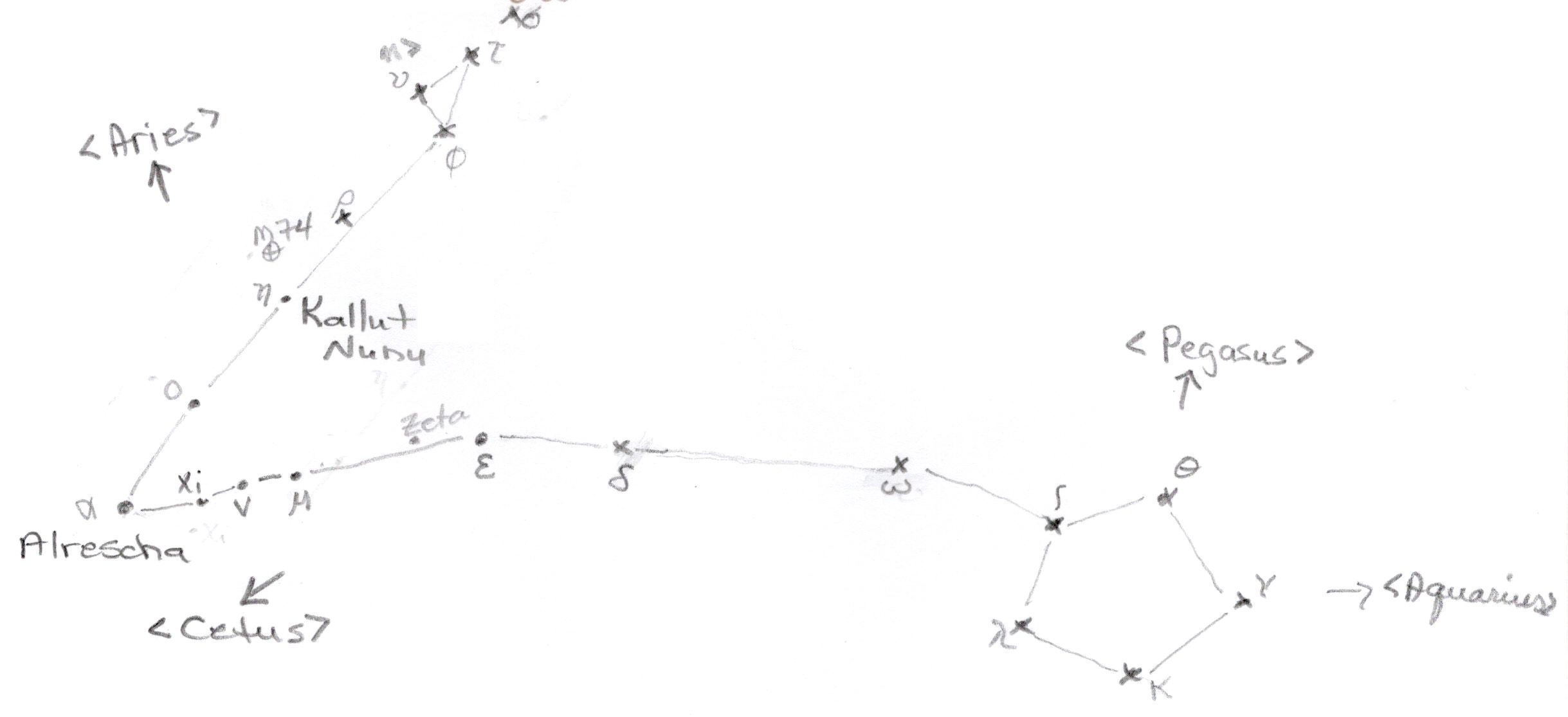
Winter Circle, Auriga, Gemini, M35
Time: 9:00 PM - 9:10 PM
Equipment: Visual
S&T Chart: 12
All of the Winter Circle stars were located and identified - Capella, Aldebaran, Rigel, Sirius, Procyon, Pollux, Castor. Noticed Auriga and its formation; Capella was quite bright compared to the others in this constellation.
Castor and Pollux were also easily found. A while later, their 'arms', 'body' and 'legs' were identified. I pointed out that M35 was at Castor' s foot/toe near the star Propus.
Orion
Time: 9:15 PM
Equipment: Binoculars
S&T Chart: 14, 16, B
Could see M42 naked eye but used my binoculars to view M42, M43 and NGC 1981 in Orion's sword. The nebulosity spreading around a bright central area was evidenced. Orion took up a large portion of the southern sky and we watched him over the course of the evening go from S-SE to S-SW.
|
M41 (Little Beehive) Also refer to Messier Catalogue - M041 (NGC 2287) - February 21, 2020 |
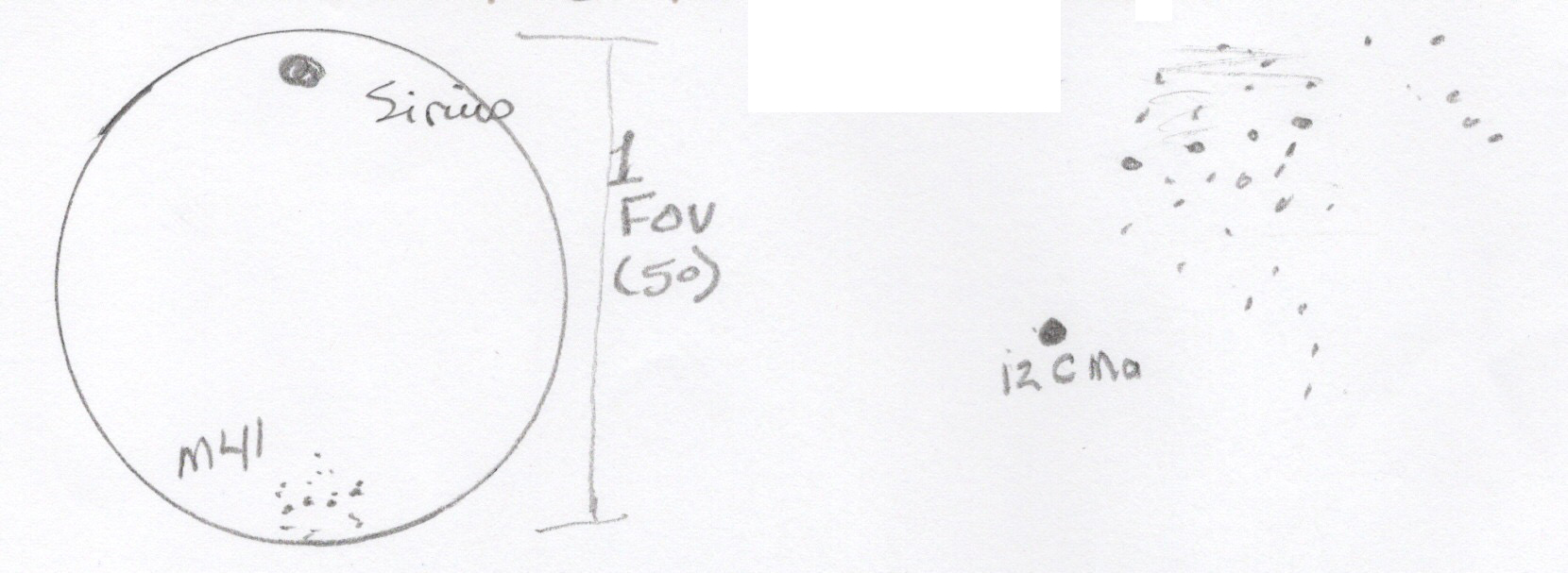
|
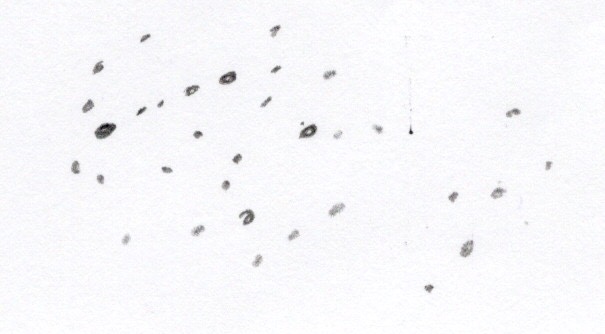
|
M47 (NGC 2422) Time: 9:50 PM Equipment: Binocular S&T Chart: 26, 27 Had to wait for Sirius and Procyon to clear the SE treeline. Using Sirius as the start point at 3 o'clock in my binocular FOV, I went 2 FOVs east of Sirius to find M47. The 4 brightest stars of its core stood out, then was able to sketch details, despite the bitter cold. Also refer to Messier Catalogue - M047 (NGC 2422) - February 21, 2020 |
Canis Major, Canis Minor
Time: 10:00 PM
Equipment: Visual
S&T Chart: 4
I was pointing out Lepus to Troy Sweeney and we both noticed the "dog" in the sky. Without identifying any stars except Sirius, we could see the body, legs, head and tail of this mythical heavenly creature. Had never seen this so clearly before. Quite striking.
Procyon and Gomeisa of Canis Minor were were easily found.
Aries
Time: 10:30 PM
Equipment: Visual
S&T Chart: 4
I was looking in the area of Pisces and Cetus and saw the 4 stars of Aries in a vertical line. Using SkySafari, I identified them as Aries. All very clear and pinpoint bright.
Perseus, NGC 869/NGC 884
Time: 11:35 PM
Equipment: Visual
S&T Chart: 2, 13
Troy and I noticed an arc of stars that pointed to Cassiopeia and determined it was the arm shoulder and head of Perseus. The stars in Perseus's arm were wrote brilliant and the arc it created easily recognizable. I noticed a nebulosity between η Per (Miram) and Ruchbah & Begin of Cassiopeia. Using Sky SafariPro realized the double cluster 869/884 were part of the nebulous oval. There was a dark lane per se between the double cluster and the Heart & Soul Nebulae.
|
Heart Nebula/IC 1805 and Soul Nebula / IC1848 The Heart Nebula was squarish in appearance but had a part that seemed brighter than the rest. I was very excited to find this! Could not make out any specific stars int he Nebula. The Soul Nebula was 'above' the Heart Nebula. It appeared as a squared oval with a slightly brighter area on its west side. Could not make out any specific stars. |
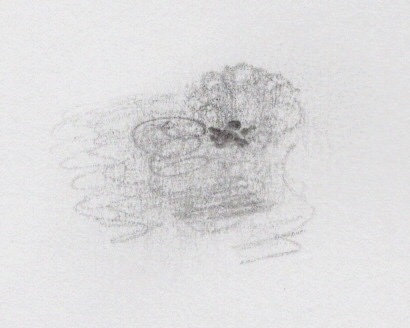
|
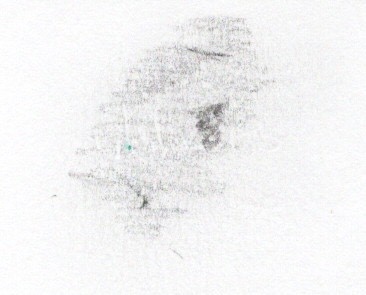
|